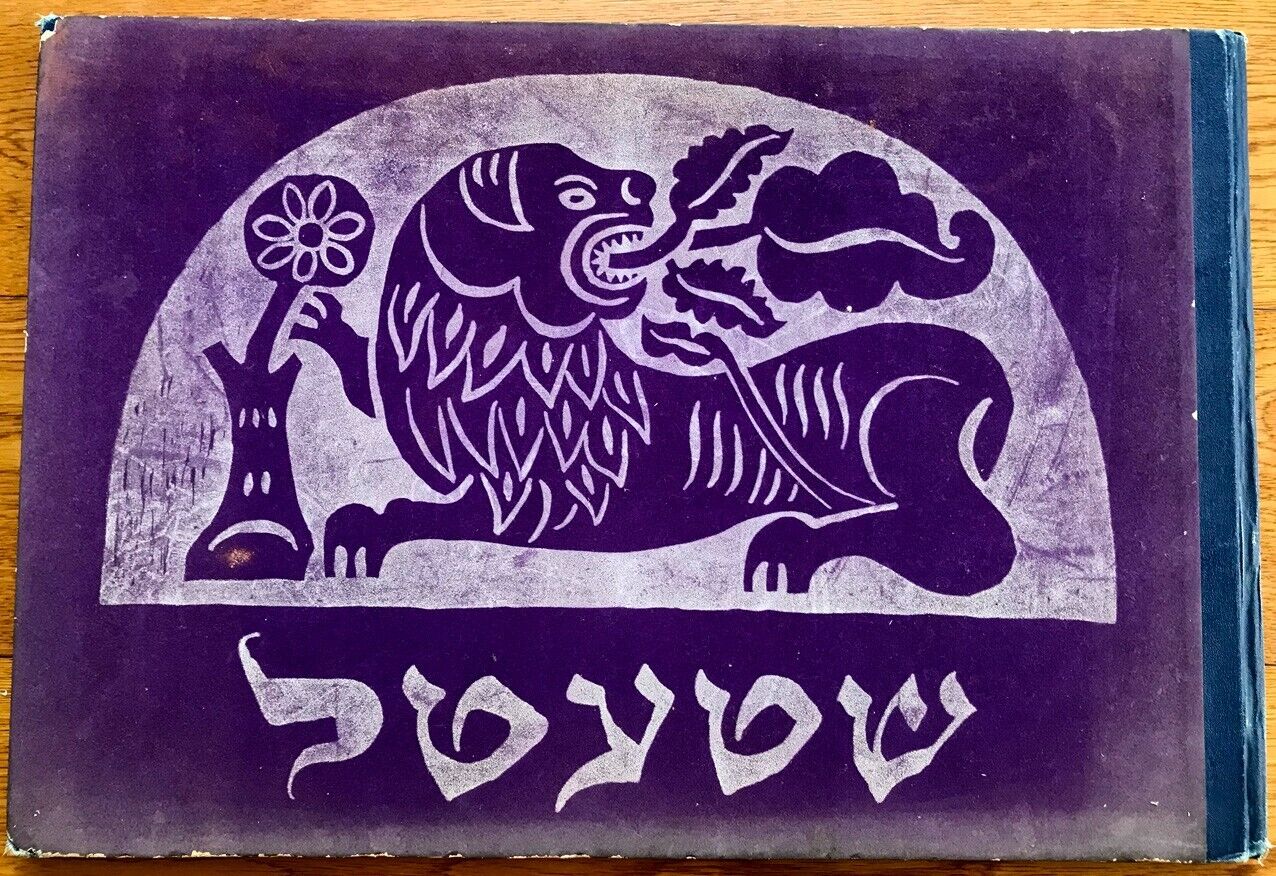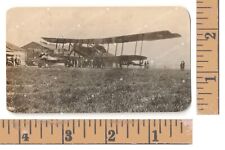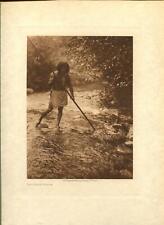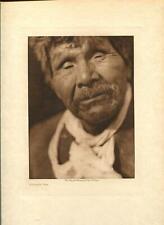When you click on links to various merchants on this site and make a purchase, this can result in this site earning a commission. Affiliate programs and affiliations include, but are not limited to, the eBay Partner Network.
DESCRIPTION : Please note !!! Unlike most other copies which every now and then appear in sales - This copy is in a VERY RARE EXCELLENT condition. Inner condition is intact , Rarely used , Perfectly clean and tightly bound. The original ILLUSTRATED VELVET BOARDS are only very slightly faded in margings with only minor shelf wear. The original cloth spine is intact. An ORIGINAL JUDAICA GEM in excellent state !!!
Here for sale is a rere JUDAICA GEM in excellent condition. Being RYBACK YIsschar BER , The renowned JEWISH - RUSSIAN AVANT GARDE artistikonic ART PIECE - STETL ( Also SHTETL ) - \"Shtetl. My Little Town, My Destroyed Home; In Memory\" a bound collection of LITHOGRAPHS which was published in 1923 ( FIRST ans ONLY EDITION ) .Ryback\'s powerful images were created as a memorial to the Jewish villages (\"shtetlekh\") - including his hometown - that were destroyed in pogroms in the aftermath of the disastrous WWI campaign and the Russian Civil War. They depict the peaceful daily life of a traditional Jewish shtetl before the upcoming destructions and massacres: a city street, the artisans (including a shoemaker, a tailor and a knife-sharpener), musicians, the market, the synagogue, a wedding, a funeral, the Jewish cemetery, the rabbi and the Hasidic rebbe. The images here show Cubist and Expressionist influences, and are in many instances reminiecent of the work of Marc Chagall, but are more solemn in tone overall.Thisalbum, regarded as Ryback’s masterpiece, was published in 1923 but most of the plates date from 1917.Shtetl(literally “small town”) was the name of Eastern European towns and villages with a large Jewish community. The illustrations depict daily life in Ryback’sshtetlbefore its destruction by the pogroms in Ukraine from 1918 to 1922. The book is haunted by a tragic event, the artist’s father’s murder by SymonPetlioura’s Ukrainian troops in 1921, and his evocation of this village no longer in existence is a reminder of this personal drama.The album comprises thirty-one lithographs numbered in Roman numerals. The dark blue canvas cover is illustrated with an etching of a lion,from a gravestone drawn by Solomon Yudovin(1892-1954), another artist who took part in the ethnographic expeditions to the Pale of Settlement.The lithographs depict scenes inspired by daily life in theshtetl. Several recurrent elements show the extent to which Ryback is emblematic of this new Jewish art he aspired to: the use of black and white referring to book and the written word (so important in Judaism), the use of Hebrew letters as pictorial elements and the influence of Cubism, which also drew inspiration from primitivism.The role of animals in this return to folk art’s sources is central. In this new Jewish art the goat is the animal representing of theshtetlpar excellence, as it is in Chagall’s work and in El Lissitzky’sHad Gadya(1919). Children are also omnipresent in the lithographs ofShtetl. In the theorisation of Jewish art they are regarded as the ideal recipients of this deliberately naïve art, and Ryback also illustrated several albums specifically for children..The album’s two penultimate images evoke death in depictions of his father’s burial and the cemetery. Ryback is thus depicting life in the shtetl as the cycle of life, ending in individual and collective bereavement – all that remains in the last image is graves. Death is also present in the album’s subtitle:Mayn Khorever Heym. A Gedekhtnis(“My Destroyed Home. A Remembrance”).The final lithograph counterbalances these sombre funerary images: a portrait (self-portrait?), with an optimist moral inscription in Yiddish. Published byBerlin-Charlottenburg:Verlag \"Schwellen\"[1923].First edition.Hardcover. Oblong folio Oblong folio (34 x 49.5 cm), 30 half-tone lithograph plates. Original half blue cloth over illustrated blue velvet. Illustrated half-title, half-tone illustrated title. Original cloth spine.Excellent condition. Perfectly clean and tightly bound. Practicaly unused. Please read the hereabove condition description. ( Pls look at scan for accurate AS IS images )Bookwill be sent inside a protective packaging .PAYMENTS : Payment method accepted : Paypal& All credit cards.
SHIPPMENT : SHIPP worldwide via registered airmail is $ 75 . Book will be sent inside a protective packaging . Will be sent around 5-10 days after payment .
Rybak, Yisakhar BerContentsHideSuggested ReadingAuthor(1897–1935), painter, graphic artist, and sculptor; active in the Jewish art renaissance in Russia. Yisakhar Ber Rybak was born in Elisavetgrad, Ukraine. He attended art school beginning in 1907 and then studied at the Art Academy of Kiev from 1911 to 1916. In the summers of 1915 and 1916, he accompanied El Lissitzky on expeditions for the Jewish Historical and Ethnographic Society, copying tombstones in Orsha and culling folk-inspired prints, ceremonial silver objects, and synagogue wood carvings in Podolia and Volhynia.Jewish farmer, from Af di yidishe felder fun Ukraine (In the Jewish Fields of Ukraine: Paris, 1926) by Yisakhar Ber Rybak. (YIVO)Following the Russian Revolution of 1917, the Central Committee of the Kultur-lige in Kiev appointed Rybak to be a drawing teacher. In this capacity, he visited Jewish agricultural communities, memories of which appear in his later works such as the lithographic album Af di Yidishe felder fun Ukraine (On the Jewish Fields of Ukraine; 1926), with its depiction of robust men and women. But in 1918, Rybak also produced his first series of pogrom scenes, revealing the carnage of the civil war.Rybak was active in the Jewish Theater Studio in Kiev, studying with Alexandra Exter, who introduced him and Boris Aronson, the future celebrated Broadway set designer, to cubism and theater design. Rybak joined with El Lissitzky and Iosif Chaikov to establish a formal department of art for the Kultur-lige. He was the coauthor with Aronson of an important theoretical article on Jewish art, “Di vegn fun der yidisher maleray” (Pathways of Jewish Art), which appeared in the journal Oyfgang in 1919; the article addressed the difficulty of establishing a Jewish national style and defining such a conception.Rybak and his fellow Jewish artists viewed the essence of their style as deriving from Jewish folk art, particularly from representations of Hebrew letters. Through imitating and copying Jewish folk artifacts, as well as establishing a Jewish iconography featuring such motifs as columns, deer, lions, and candlesticks, such stylizations became a standard form of modern Jewish art.Rybak moved to Moscow in late 1919, where exposure to constructivist principles left its imprint on his best works (see image below right). In 1920 he returned to Kiev, where he chaired the committee charged with organizing the first large group exhibition of Jewish artists. In 1921 he moved to Berlin, joining the November Gruppe and exhibiting with its artists.Alef-beys (Alphabet). Yisakhar Ber Rybak, 1918. Oil on canvas. (Ryback Museum, Bat Yam, courtesy of the Bat Yam Municipality Department of Culture and Strategic Planning)In Berlin in 1922, Rybak produced a series of illustrations for children’s books written in Yiddish. Influenced by Ivan Bilibin’s Russian nationalist stylizations, he set a group of Jewish motifs inside a Jugendstil arched frame—including goats, fences, carved wooden houses—with Hebrew letters in flat, schematic yet lively designs illustrating such works as Leyb Kvitko’s poetry for children: Foyglen (Birds) and Grin groz (Green Grass; 1922).Rybak’s masterpiece remains the lithographic album, Shtetl, mayn khoreve heym, a gedenkenish (Shtetl, My Destroyed Home, a Memory; 1923), in which he evokes the shtetl in dark tones, fusing cubism and expressionism, assymetrical design, exaggerated facial features, and interpenetrating planes. This style is superimposed upon such prototypical images of religious life as the synagogue, the religious school, Jewish holidays, funerals, and weddings. Representative types of shtetl occupations include the cobbler, the knife sharpener, the butcher, and the rabbi. His next album, Judische Typen aus der Ukraina (Jewish Types of the Ukraine; 1924) depicts shtetl figures as well.In 1925, Rybak returned to the Soviet Union and worked as a designer for the Yiddish theater, creating stage sets in Moscow and Kharkov. In 1926 he moved to Paris, where he published his last album Les ombres du passé / Shotns fun amol (Shadows of the Past; 1932). Between 1928 and 1934, his works were exhibited in major European galleries. He died suddenly in 1935. In 1962, his widow donated his personal art collection, including small clay sculptured figures of shtetl types, to the Rybak Museum in Bat Yam, Israel.[14] ****** Shtetl. My Little Town, My Destroyed Home; In MemoryRyback, Issachar BerBerlin-Charlottenburg: Verlag \"Schwellen\" [1923]. First edition. Hardcover. Oblong folio (13 1/4 x 19 1/2\"). [2], III-XXXI, [1] leaves. Original half blue cloth over illustrated blue velvet. Illustrated half-title, half-tone illustrated title.Ryback\'s powerful images were created as a memorial to the Jewish villages (\"shtetlekh\") - including his hometown - that were destroyed in pogroms in the aftermath of the disastrous WWI campaign and the Russian Civil War. They depict the peaceful daily life of a traditional Jewish shtetl before the upcoming destructions and massacres: a city street, the artisans (including a shoemaker, a tailor and a knife-sharpener), musicians, the market, the synagogue, a wedding, a funeral, the Jewish cemetery, the rabbi and the Hasidic rebbe. The images here show Cubist and Expressionist influences, and are in many instances reminiecent of the work of Marc Chagall, but are more solemn in tone overall.The lithographs measure 10 3/4 x 15\", and are all dated 1917 in the stone. Of the 30 half-tone plates (Title + plates numbered from III-XXXI), four are printed in bistre, and the others in sepia or black. This copy does not contain the list of plates at the rear. ***** A selection from a set of 30 lithographs by the Russian artist Issachar Ber Ryback, dating mostly from 1917 and published in a book by the Berlin-based \"Farlag Shveln\". The images depict scenes of Ryback\'s home village in Ukraine before it was destroyed in the pogroms following World War I, a fate which seems ominously echoed in the torturous angles and distortions of form in which he represents the daily activities of village life. After graduating from art school in Kiev in 1916, Ryback played a key role in the Yiddish avant-garde of the Soviet Union following the Russian Revolution. After his father was murdered by Petliura\'s soldiers in 1921, he fled to Germany, settling in Berlin where he became a member of the Novembergruppe and was involved in a number of important exhibitions. After a return trip to Russia, working on a set design for a Yiddish theatre and undertaking a prolonged journey through the Jewish \"kolkhozes\" of Ukraine and Crimea, he moved to Paris in 1926. Here he lived at the heart of the city\'s vibrant artistic life - including solo exhibitions at the Galerie aux Quatre Chemins (1928) and Galerie L’Art Contemporain (1929) - until his death in 1935.Issachar Ber Ryback, also Riback (Іссахар-Бер Рибак; 2 February 1897, in Yelisavetgrad, Russian Empire (today Kropyvnytskyi, Ukraine) – 22 December 1935, in Paris) was a Jewish-Ukrainian-French painter.[1]LifeRyback attended the art school in Kiev until 1916. He joined a progressive group of painters and was influenced by advocates of a modern Jewish literature such as David Bergelson and David Hofstein. The painters Alexander Bogomazov and Alexandra Exter were in Kiev at the time, and they taught him in 1913. In 1916 El Lissitzky and Ryback were given the task to make Jewish art memorials of schtetls from Ukraine and Belarus. When he participated in an exhibition of Jewish paintings and sculptures in Moscow the spring 1917, his works were especially recommended.During the October Revolution in 1917, he took part in multiple activities to redefine avantgarde Yiddish culture, e.g., he was a member of Kultur Lige in Kiev. Later he went to Moscow. After his father was killed by Petliura\'s soldiers in the pogroms in Ukraine, he fled in April 1921 to Kaunas and in October 1921 he obtained a visa for Germany. He was in Berlin until 1924.He was a member of the Novembergruppe and exhibited his Cubist pictures at both the Berliner Secession and the Juryfreien Kunstausstellung.He also illustrated three small Yiddish fairy tale books for Miriam Margolin. His Shtetl. Mayn Chorever Heym, a Gedekniss (Shtetl, My Destroyed Home. A memorial) was published in 1923 by Schwellen-Verlag. It is a collection of lithographs of his home town which was destroyed by pogroms. At the time the Jewish education organization World ORT was situated in Berlin and he made the design for its logo.Title page designed by Ryback for the children\'s book In Vald by Leib Kwitko (Berlin, 1922)In 1924 he tried to work in the Soviet Union by decorating scenes at Yiddish theaters.In 1926 he emigrated to Paris and did not return to Russia.In 1928 he had a solo exhibition in the \"Galerie aux Quatre Chemins“ and in 1929 in the \"Galerie L’Art Contemporain“. His style of painting had turned to the Expressionistic coloring of the School of Paris in the interwar period. Further exhibitions followed at galleries in The Hague, Rotterdam, Brussels and Antwerp. In 1935 he traveled to the opening of his exhibition in Cambridge. He did not live to see the retrospective exhibition in Paris organised by Georges Wildenstein.Rybak was a contemporary of Jewish-Russian artists Natan Issajewitsch Altman, Boris Aronson and Marc Chagall, who transmitted the Jewish tradition in modern art.Most of the works he left behind are in the Museum Ryback in Bat Yam in Israel, a part of the MoBY-Museums of Bat Yam complex.[2]****** Issachar Ber Ryback� a painter, a graphic, a sculptor, a scene painter, and an art critic. He was born on February 2, 1897 in Yelisavetgrad (now Kirovograd, Ukraine). Though his father originated from a high-born Chassid family, he was a follower of Haskala and an admirer of the Russian culture, and tried to foster love of this culture in his children. Nevertheless, he sent his son to the \"heder\", though rather late, only at the age of 10, because due to his delayed development and unhealthiness Ryback lacked speech habits nearly till he was nine. He studied in the \"heder\" for slightly more than a year, dedicating most of his time to the evening drawing classes for workers attached to the local factory, which he attended in secret. At the age of 11 he entered the Yelisavetgrad courses for scene painters, and having completed the course, was working since 1909 in an artel (co-operative unit) that dealt with interior paintings of public and church buildings. The money he earned in the artel permitted him to become independent and continue his artistic education, despite his father\'s resistance. In 1911, Ryback was admitted to the Kiev School of Arts, Faculty of Painting, and graduated in 1916. At that period he became a member of the non-formal group created by the school Jewish painters that included, in particular, Boris Aronson, Alexander Tyshler, Solomon Nikritin, Mark Epstein, and Isaac Rabinovich, who later became the well-known artists. They all were consolidated by the idea of keen national self-identity and interest to various modernistic trends in art. Particular features of their world outlook were influenced, on the one hand, by the ideology of the so-called Kiev Group of Yiddish men of letters: David Bergelson, Nachman Mayzil, Yehezkiel Dobrushin, David Hofstein, etc., who were the theoreticians and the creators of the \"modern\" Jewish culture and literature. On the other hand, Ryback, similarly to the other, close-spirited young Jewish painters, established close links with Alexander Bogomazov and Alexandra Exter, who lived then in Kiev and were among the leading painters of the Russian avant-garde. In 1913-1914 Ryback attended classes in Exter\'s private studio. In 1915, at the Kiev Spring Exhibition, he for the first time presented his paintings, most of them being inspired by Jewish topics but in a modernistic style. In summer 1916, Ryback, together with El Lisitzky, was commissioned by the Jewish Historical and Ethnographic Society to travel all over Ukrainian and Byelorussian small towns (stetln) and copy the paintings in wooden synagogues and carved gravestones on the Jewish cemeteries. This trip awoke Ryback\'s interest in Jewish folk art and from that time on, he started regular collection and copying of the art samples. In spring 1917, Ryback participated in the Moscow Exhibition of Jewish painters and sculptors, and the critics assessed him as \"one of the most brilliant and ingenious artists\". The same year, Ryback participated in the launching of the Kiev Branch of the Jewish Society for the Fine Art Encouragement. In spring 1918, he became a founder of the Culture League Artistic Division. It was the organization established at that period in Ukraine for the development of new Jewish culture in Yiddish language. In 1918-1919, Ryback taught drawing and painting at the Kiev Jewish Children\'s Studio attached to the Artistic Division, designed a number of stamps for Jewish publishing houses and made artistic design of the Eygns, a literary almanac in Yiddish. Besides, he prepared scenery sketches and scale model for the pioneering production of the Culture League Theater Studio that have foreseen some of the Constructivist set design discoveries. In summer 1919, in the Baginen, the Kiev Yiddish-language magazine, in collaboration with Boris Aronson, Ryback published The Ways of Jewish Painting paper, which served as a peculiar manifesto of Jewish avant-garde art. The paper authors were of opinion that the art should represent the synthesis of the Jewish artistic tradition and the achievements of the European radical modernism. In conformity with the program stated, Ryback himself painted a number of works where Jewish symbols and folk art motifs were intertwined with the avant-garde techniques of image plotting. At the same period, he created a series of works dedicated to the Jewish pogroms in Ukraine in one of such pogroms his father was murdered. In spring 1920, Ryback was one of the organizers and participants of the exhibition held by the Culture League Artistic Division in Kiev. Soon after the exhibition closing, in April, he relocated to Moscow, where he was living for about a year. Within that period he participated in the activities of the Circle of Jewish Writers and Painters, and collaborated with the Moscow Jewish Chamber Theater. In April 1921, Ryback left Russia and for a number of months, waiting for his entry visa for Berlin, resided in Kovno (now Kaunas). There he designed a couple of books in Yiddish and worked at the Lithuanian Culture League institutions. In October he arrived in Berlin and began his active participation in the international and Jewish cultural life. In 1921-1924, Ryback was the Novembergruppe member and took part in its exhibitions; he also exhibited his works at the Berlin Sezession and Juryfreie Kunstshau exhibitions. In 1922, together with Yankel Adler and Henryck Berlevi, Ryback (as the representative of the Eastern European Jewish painters) participated in the preparation and conduct of the congress of the Union of Progressive International Artists (Dusseldorf, May 29-31, 1922). Jointly with other Jewish painters such as Nathan Altman and Joseph Chaikov, Ryback collaborated with Jewish writers in Berlin and participated in their cultural events. The same year he made artistic design of three books by Miriam Margolin Fairy Tales for Small Children in Yiddish. In parallel, Ryback of that period was engaged in artistic criticism, publishing reviews of various exhibitions and papers on painters in German and Jewish newspapers. He also cooperated with German Jewish publishing houses and performed orders for artistic works from certain Jewish organizations, specifically ORT. In 1923, the Shvelln, a Berlin Jewish Publishing House, published Ryback\'s graphical album named Stetl. A year after, his Jewish Types of Ukraine lithographic album saw the light. These two graphic series were based on Ryback\'s impressions and recollections of his 1916 trip along the Ukrainian and Byelorussian stetln. From December 1923 until January 1924 he had his solo exhibition in Berlin, which revealed Ryback\'s achievements as the original interpreter of Cubism. In December 1924 he came back to Moscow as he was invited by the Jewish Studio of the Byelorussian Theater to make stage design of a theater play. Also, in early 1925 Ryback made stage design of the In bren and Purimspiel plays at the Ukrainian State Jewish theater of Kharkov. Soon after that, he undertook a prolonged trip along the Jewish kolkhozes of Ukraine and Crimea. The trip resulted in the At the Jewish Fields of Ukraine album, which was published in 1926 in Paris where Ryback finally relocated in early 1926. Immediately, he began to play an outstanding role in the artistic life of the French capital, which was evidenced by his two one-man exhibitions in the Galerie aux Quatre Chemins (1928) and in the Galerie LArt Contemporain (1929). His painting style underwent changes in that period: Ryback passed from the Cubist stylistics to the Expressionist colorist painting a la Ėcole de Paris. He won recognition beyond the French borders as well. In 1930 his one-man show took place in the Hague, in 1931, in Rotterdam, in 1932, in Brussels and Antwerp. In 1932, a folder of etchings based on his Shadows of the Past drawings was published in Paris and its characters showed Ryback\'s permanent adherence to the Jewish theme. It was also witnessed by his ceramic sculptures created in his last years of life. His ceramic exposition was held in early 1935 in Musée National Céramique de Sèrves, and later the Museum purchased some of Ryback\'s sculptures for his collection. In February 1935, at the invitation of the Cambridge University Artistic Society, Ryback went to England to the opening of his exhibition. On his way to Cambridge he stopped in London, where a small exhibition of Ryback\'s works was open for the representatives of local Jewish public and culture at the house of Leah L.Gildesheim, a Jewish public figure. In April 1935, the exposition of his works was opened in Cambridge and was highly praised by the British art critics. In May 1935, Ryback returned to Paris, full of creative ideas that he did not succeed to realize. Due to dramatic worsening of his severe chronic disease he was forced to go to the hospital, where he spent the last months of his life. In fact, the dying painter\'s friends had enough time to hold the exhibition of his works in a Paris gallery. Ryback took part in the exhibition preparation even saying in hospital, but he was unable to appear at the opening. Soon after the exhibition closed, Ryback passed away, on December 22, 1935.6186/217






